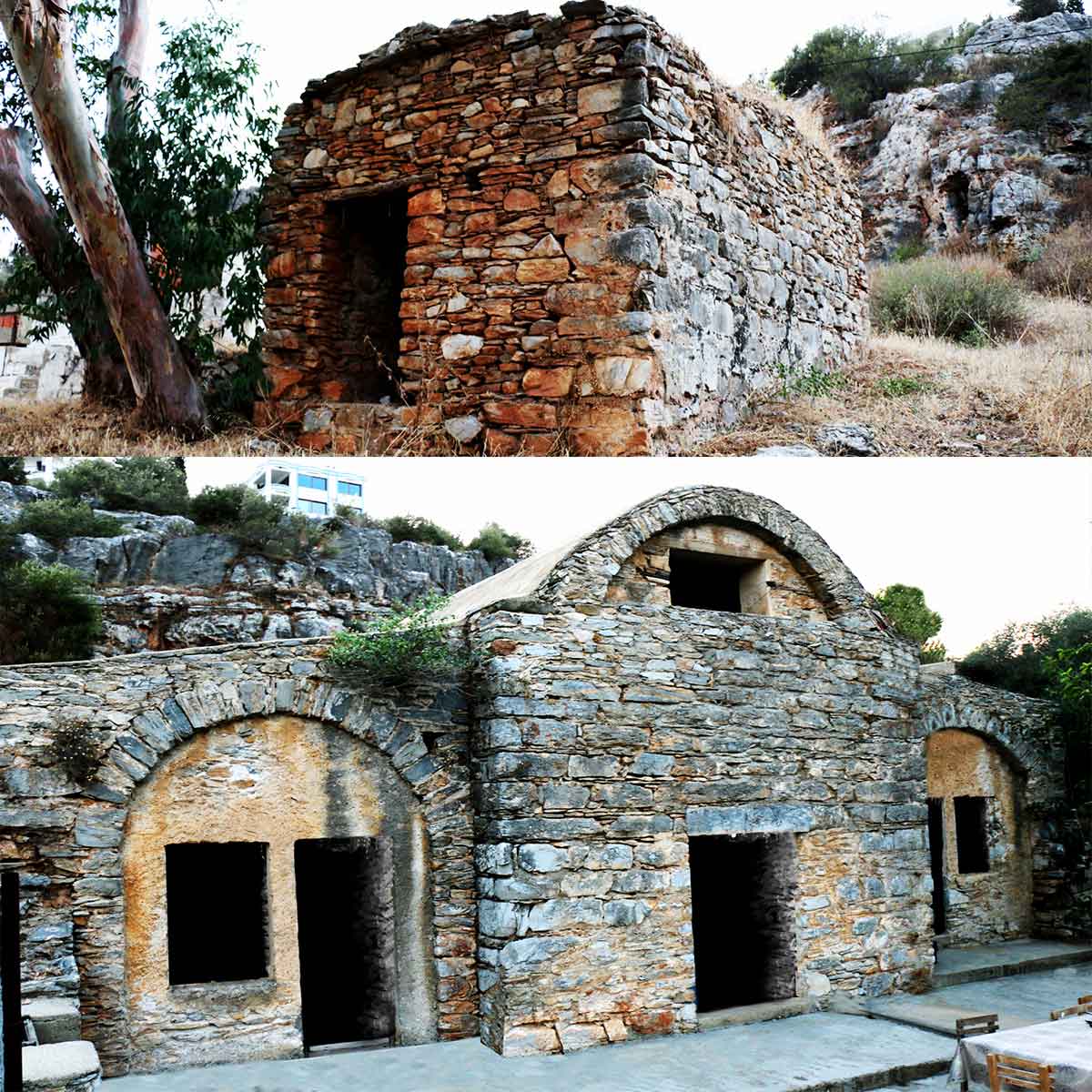The Necropolis with Chamber Tombs

There are interesting photographs from the first Italian exploration of the early 20th century, which provide a record of the region at that time: the present village did not exist and in the area near the isthmus there were dozens of chamber tombs along the slope, giving Giacomo Guidi the impression of facing ‘a picturesque city of sepulchres’.
The necropolis, today less visible and less well preserved on account of the intense building activity, sits on the slopes of the western plateau, which descends in a series of terraces towards the sea for about 600 m. It seems to have been in use almost continuously from the second half of the 2nd century BC to the 4th century AD.
One of the amphora burials near the tomb situated by the side of the main street of the modern village was provided with the following burial gifts: a small thinwalled ceramic cup and glass dove-shaped ampulla of a type produced in the north Italian workshops of the Ticino and widespread in that part of Italy during the 1st century AD. Its presence in Iasos indicates that the exportation of such balsamaria, attested in Italy, Gaul and Germany, had also reached the eastern Mediterranean regions. The child interments uncovered in the area of the Italian Archaeological Mission included fragments of terracotta statuettes as burial gifts.
It seems to have been in use almost continuously from the second half of the 2nd century BC to the 4th century AD.
Giving Giacomo Guidi the impression of facing ‘a picturesque city of sepulchres’.

 Selçuk University
Selçuk University  Ministry of Culture & Tourism
Ministry of Culture & Tourism